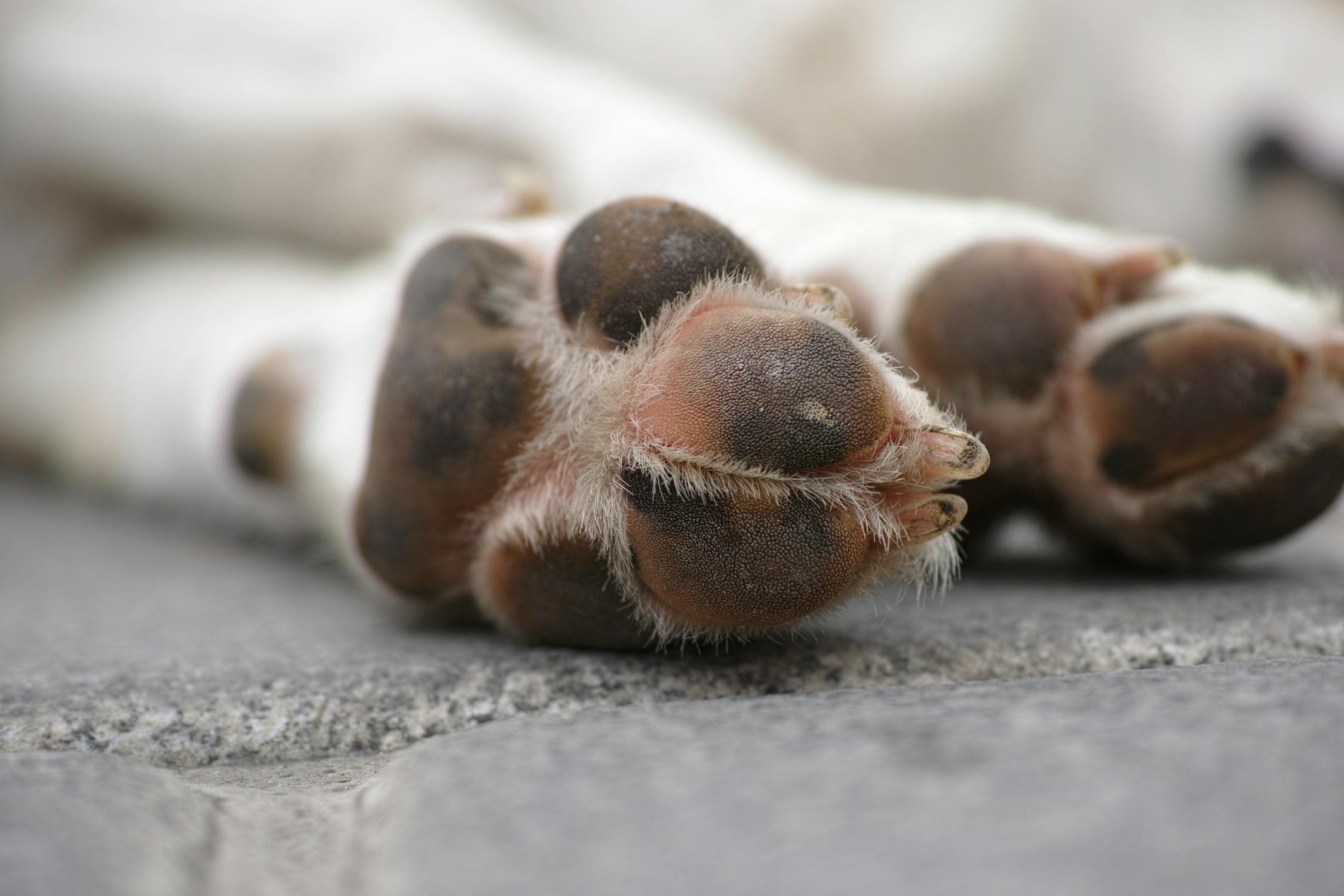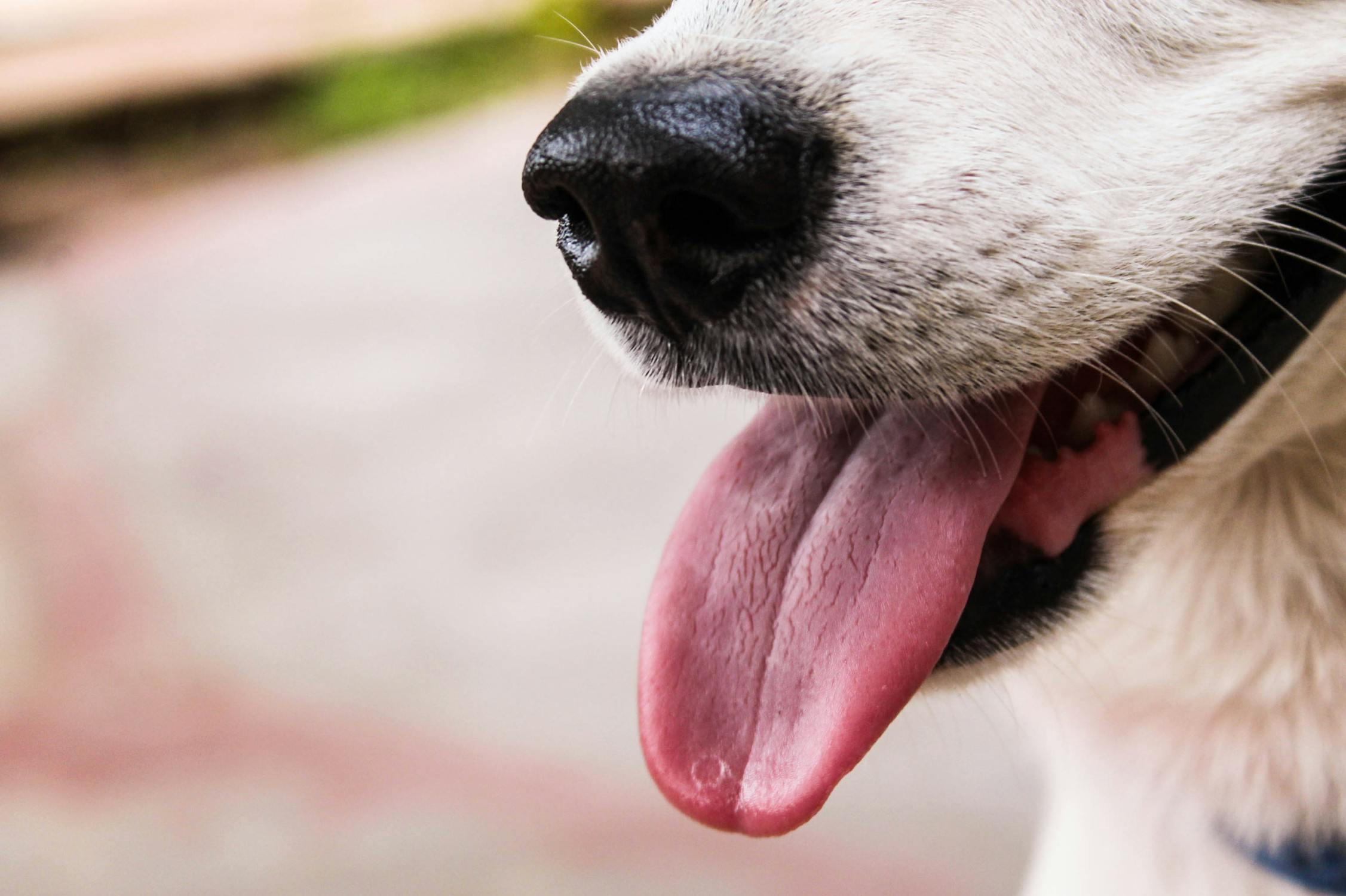Facing the reality that your dog may be nearing the end of their life is one of the hardest parts of being a pet owner. Dogs bring unconditional love and companionship into our lives, and their decline can be heartbreaking. Recognizing the signs your dog is dying can help you provide the care and support they need during their final days. These signs can develop gradually or appear suddenly, depending on their condition or age.
By understanding these signs, you can take proactive steps to keep your dog comfortable and reduce their suffering. Whether it’s managing pain or making the difficult decision to say goodbye, being informed will help you make the best choices. Providing emotional support and maintaining their dignity is key during this time. It also allows you to prepare for what’s ahead, helping both you and your dog navigate this difficult journey. Below, we’ll discuss 11 common signs your dog may be nearing the end of their life and how to support them with love and care. Each dog’s situation is unique, so always consult with your veterinarian for guidance on what’s best for your pet.
1. Loss of Appetite

One of the most obvious signs your dog is dying is a sudden loss of interest in food. Dogs typically have hearty appetites, so a drastic change in eating habits can signal distress. When dogs are nearing the end of their lives, they may refuse to eat or drink, even when their favorite foods are offered. This could be due to nausea, pain, or a decrease in energy. Additionally, a decrease in hydration may also occur, leading to further complications. As their bodies weaken, they lose the drive to consume food, which leads to further weight loss and muscle deterioration. Watching your dog decline in this way can be heartbreaking, but it is a common sign of aging or illness. If your dog is not eating, it is important to consult a veterinarian to determine the best course of action and how to address their nutritional needs.
How to Support:
Offer your dog softer, more appetizing food, such as wet food or homemade meals, to entice them to eat. Sometimes, heating up their food can make it smell more appealing. You can also try offering small amounts of food more frequently throughout the day. If your dog refuses food for more than a day, try offering water or ice cubes to keep them hydrated. Monitor their intake closely, as dehydration can lead to further complications. If they continue to refuse food, contact your vet for guidance, as they may need medications to help stimulate their appetite. Always remain patient and gentle with your dog during this time, as they may feel confused or upset. Provide emotional comfort by sitting with them and speaking softly, even if they are not eating.
2. Excessive Lethargy

Excessive lethargy is another key sign your dog is dying. If your dog, who was once energetic and playful, starts spending most of their time lying down and sleeping, this could signal a decline in their health. As dogs approach the end of their lives, their bodies lose strength, and they may no longer have the energy to engage in their usual activities. They might struggle to walk, play, or interact with you as they used to. Their muscles weaken, and they may become unable to get up without assistance. You may notice that your dog seems uninterested in their surroundings, and they may even withdraw from interactions with family members. Lethargy is common in dogs with terminal illnesses, heart disease, or organ failure. This extreme fatigue is not just due to old age; it is often a sign that their body is shutting down.
How to Support:
Give your dog a calm, comfortable place to rest. A quiet corner or a soft bed in a familiar environment can help them feel secure. Keep their resting area free from distractions and noise to minimize stress. Avoid forcing them to walk or engage in activities that could cause discomfort. Let them sleep as much as they need, and be patient with their decreased energy levels. You can sit with them, offering gentle comfort by stroking their fur or speaking to them softly. If your dog seems to experience significant difficulty getting up, try to help them stand or reposition them to avoid sores or further discomfort. Monitor your dog’s condition closely and consult your vet about options for pain relief or further care.
3. Difficulty Breathing

If your dog seems to be having trouble breathing, it could be one of the most alarming signs your dog is dying. Labored breathing or shallow breaths are often associated with heart disease, lung conditions, or organ failure. Your dog may breathe rapidly or have an irregular breathing pattern that can be distressing to watch. In more severe cases, they may wheeze, cough, or appear to be gasping for air. Breathing difficulties can also be a sign of fluid buildup in the chest or abdomen, which can occur when organs start failing. If you notice your dog is struggling to breathe, it’s essential to address the issue promptly. Difficulty breathing is a clear indication that your dog’s body is under stress, and they may need immediate medical attention to improve their comfort.
How to Support:
Ensure your dog is in a cool, well-ventilated area to aid in their breathing. Keep their environment calm and quiet, as stress can worsen respiratory issues. If your dog is showing signs of respiratory distress, avoid any physical activity that could exacerbate the problem. Hold your dog close to provide comfort, and avoid raising their anxiety with sudden movements or loud noises. Consider using a humidifier in the room to help make the air easier for your dog to breathe. If breathing becomes more labored or they show signs of choking, contact your veterinarian immediately. They may recommend oxygen therapy or medications to help relieve discomfort. Provide your dog with as much peace and comfort as possible during this challenging time.
4. Incontinence

Incontinence, or the loss of bladder and bowel control, is another one of the signs your dog is dying. As a dog’s body weakens, they may no longer be able to control their bodily functions. This could happen due to age, neurological disorders, or other serious conditions like kidney failure. If your dog is usually house-trained but suddenly begins having accidents, it may indicate that their health is declining. Incontinence is often seen in dogs nearing the end of their life, as their muscle tone and control over bodily functions diminish. It is also possible for dogs to become confused and forget where to relieve themselves, adding to the difficulty. This can be a distressing symptom for both you and your dog, but it is a natural part of the dying process.
How to Support:
Use absorbent pads or dog diapers to manage accidents and prevent discomfort. Keep your dog clean and dry by regularly checking for soiling and washing them gently. This will also help avoid skin irritation, which can occur from prolonged exposure to urine or feces. If your dog is incontinent, try to create a space where they can move around without slipping or becoming stuck in a corner. Ensure they are comfortable and have easy access to their food and water. Offer reassurance and stay patient, as your dog may feel embarrassed or frustrated by this symptom. Always clean them gently to prevent discomfort or skin damage, and consult with your vet about any treatments that might help control the incontinence. The goal is to maintain your dog’s dignity and comfort as much as possible.
5. Unusual Behavior or Confusion

As dogs age or approach the end of their life, confusion or unusual behavior can become more pronounced. You may notice your dog becoming disoriented, wandering in circles, or acting in ways that are completely out of character. They may forget familiar places, or they could seem startled or frightened by things they’ve never reacted to before. This behavior can result from a variety of health issues, such as cognitive dysfunction syndrome, which is similar to dementia in humans. As the body and mind begin to deteriorate, it can lead to forgetfulness, difficulty recognizing family members, or failure to respond to familiar commands. In more advanced stages, your dog may not remember where their bed is or may not react when you call their name. This confusion can be distressing for both you and your dog, as they may not understand what’s happening to them. It’s important to be patient and understanding, offering them comfort and reassurance.
How to Support:
When your dog seems confused, try to keep their environment as familiar and comforting as possible. Limit changes to their routine and make sure they always have access to food, water, and their resting spot. Speak to them gently and reassure them with your presence, even if they don’t seem to recognize you. Avoid sudden movements or loud noises that could cause stress. It might also help to keep their living space simple and uncluttered, so they can navigate more easily. Offer them calm, soothing attention without overwhelming them. If confusion worsens, consult your veterinarian for advice on how to manage their cognitive decline. Medications or supplements may help ease some of their symptoms.
6. Change in Grooming Habits

When your dog is nearing the end of their life, one of the signs your dog is dying may be a noticeable change in grooming habits. Dogs typically groom themselves regularly, licking their fur, paws, and cleaning their faces. As their health declines, however, they may no longer have the energy or strength to maintain their usual grooming routine. This is often due to physical weakness, pain, or cognitive decline. Your dog may have matted fur or appear unkempt, as they can no longer care for themselves as they once did. In some cases, they may even stop grooming entirely. If your dog is unable to groom themselves, it’s a sign that they may be too tired or in too much discomfort to do so. This change in behavior can also be tied to physical decline, as your dog might not have the coordination or energy to clean themselves properly.
How to Support:
If your dog is no longer grooming themselves, help them stay clean by gently brushing their fur and wiping away any dirt. Be careful around sensitive areas such as their face or paws, as they may be more sensitive than usual. Regular grooming can also help prevent matting, tangles, or skin irritation. If your dog has a tendency to develop mats, use a detangling spray and a soft brush to avoid discomfort. It’s important to be gentle and patient, as some dogs may find grooming uncomfortable if they’re in pain. This is also a good time to check for any skin issues, like sores or rashes, that may require treatment. Keep your dog clean and comfortable, and avoid pushing them if they show signs of distress. Consult with your vet if you notice any serious skin conditions.
Read More: A Clinical Psychologist Explains Why Grief Isn’t Something to Just Get Over
7. Pale or Gray Gums

One of the signs your dog is dying may be a noticeable change in the color of their gums. Healthy dog gums should be a bright, healthy pink, but if you notice that they are pale or grayish, this could indicate a serious health issue. Pale gums are often a sign of anemia, which may be caused by a variety of factors, including blood loss, infection, or organ failure. Gray gums can signal poor circulation or a lack of oxygen, suggesting that your dog’s heart or respiratory system is failing. If your dog’s gums change color and remain that way, it’s a clear indication that their body is not functioning as it should. This symptom is particularly concerning if it is accompanied by other signs like lethargy, difficulty breathing, or weakness. The change in gum color may indicate that vital organs are struggling to function properly.
How to Support:
If you notice that your dog’s gums are pale or gray, it’s crucial to get them evaluated by a veterinarian immediately. The vet will be able to assess the underlying cause of the gum color change and recommend treatment options. If the gums are gray due to poor circulation or oxygen deprivation, your dog may require medications or oxygen therapy to stabilize their condition. In some cases, if the underlying cause is severe, it may be time to discuss end-of-life options with your vet. Keep your dog comfortable by limiting their physical activity and avoiding stress. Monitor them closely for any other signs of distress. Offer comfort by staying with them and providing reassurance, as they may feel unwell and need emotional support.
8. Loss of Interest in Social Interaction

When dogs are nearing the end of their lives, they may begin to withdraw from social interactions. If your dog, who was once playful and affectionate, suddenly becomes distant or refuses to interact with you or other family members, this is one of the signs your dog is dying. They may stop playing with their favorite toys, no longer seek attention, or withdraw from petting and cuddling. This loss of interest in socializing can be attributed to pain, fatigue, or a decrease in cognitive function. As their health deteriorates, your dog may simply not have the energy or mental clarity to engage in activities they once enjoyed. In some cases, the withdrawal is also a response to feeling unwell or disoriented. While it can be difficult to see your dog pull away, this change in behavior is often a sign that their body is preparing for the end.
How to Support:
Even if your dog is withdrawing, continue to offer them love and reassurance. Sit quietly with them, speak in soothing tones, and offer gentle touches. Don’t push them to interact if they’re not ready, but let them know you’re there for them. You can also try offering treats or special food, but don’t force them to eat if they’re not interested. Make their environment as calm and comfortable as possible, avoiding loud noises or hectic activity. Keep their space clean and cozy, so they feel secure. Continue providing care with patience and understanding, as your dog may be dealing with physical discomfort and emotional confusion. If the withdrawal becomes more pronounced, consult your veterinarian about any options to help manage their symptoms.
9. Vomiting or Diarrhea

Frequent vomiting or diarrhea, particularly when it occurs with other concerning symptoms, can be one of the signs your dog is dying. These gastrointestinal issues may be caused by an underlying illness such as kidney failure, cancer, or infections. If your dog is vomiting multiple times a day or has persistent diarrhea, it could indicate that their body is no longer functioning properly. In some cases, this could be a result of the body’s inability to process food or absorb nutrients as the organs begin to fail. Dehydration can also be a risk, particularly if vomiting and diarrhea prevent your dog from keeping fluids down. This can worsen their condition, making it essential to keep an eye on hydration levels. Vomiting or diarrhea may also signal pain or distress, and it’s important to monitor your dog closely for any signs of worsening symptoms.
How to Support:
If your dog is vomiting or experiencing diarrhea, ensure they have access to fresh water at all times. Offer small amounts of water frequently to prevent dehydration. You can try offering them bland foods like boiled chicken and rice if they are willing to eat, but don’t force food if they’re not interested. If vomiting or diarrhea continues for more than a day, contact your vet for a thorough evaluation. Your veterinarian may provide medications to help manage nausea, vomiting, or upset stomach. Make sure your dog is kept in a clean, comfortable environment, and avoid any sudden changes in diet that could upset their stomach further. Monitor their condition closely and take steps to minimize their discomfort, while seeking veterinary care as soon as possible.
10. Uncontrollable Shaking or Tremors

Uncontrollable shaking or tremors in dogs can be alarming and are often signs that your dog is in pain or distress. While mild shaking can occur from cold or anxiety, persistent tremors, especially those that occur when your dog is resting, are concerning signs your dog is dying. Tremors are commonly associated with pain, neurological issues, or organ failure, as the body’s systems begin to shut down. They may occur due to weakened muscles or a malfunctioning nervous system. Shaking or tremors can also be a sign of systemic shock, particularly if your dog’s circulation or heart function is compromised. In some cases, trembling may be linked to a lack of coordination or the inability to regulate body temperature, which can occur in terminally ill dogs.
How to Support:
If your dog is shaking, provide them with warmth by covering them with a soft blanket. Keep them in a quiet, calm area where they feel safe and comfortable. Avoid any physical activity that could worsen their tremors or cause additional pain. Stay close to them to provide reassurance and comfort. If the shaking is intense or persistent, speak to your vet, as they may recommend medication to help alleviate pain or manage tremors. In some cases, tremors may be due to underlying medical conditions, and a vet can guide you on the best course of action. Providing pain relief and a calm environment is crucial to help your dog feel more comfortable during this time. Make sure to monitor their condition and report any changes to your vet promptly.
11. Loss of Vision or Hearing

As dogs approach the end of their life, they may experience a gradual or sudden loss of vision or hearing. This can happen due to age-related changes, neurological decline, or health conditions like cataracts or hearing loss. If your dog seems startled by familiar sounds or bumps into objects, it could be a sign that their sight or hearing is deteriorating. Loss of vision or hearing can also contribute to confusion, as your dog may no longer recognize familiar people, places, or objects. This change may also affect their behavior, causing them to be more cautious, anxious, or withdrawn. The loss of sensory functions can be a difficult sign for both you and your dog, but it is a natural part of the aging process or terminal illness.
How to Support:
If your dog is losing their vision or hearing, make sure their environment remains safe and easy to navigate. Keep furniture and obstacles in consistent locations to help them move around without confusion. Speak gently to alert them of your presence, and avoid sneaking up on them, as this can startle them. If your dog is losing their hearing, use touch or vibrations to get their attention. Ensure they have a safe space to rest, where they won’t accidentally hurt themselves while disoriented. Provide emotional support by staying patient and comforting them. If necessary, consult your vet for ways to manage sensory decline and provide further care options.
Conclusion

Recognizing the signs your dog is dying can be incredibly difficult, but it is an important step in ensuring your pet’s final days are filled with love, comfort, and respect. By understanding these signs, you can make informed decisions about their care and quality of life. Providing gentle support, pain relief, and a calm environment is essential during this time. While this is a deeply emotional journey, offering your dog compassion and dignity will help ease their suffering and allow you to cherish the time you have left together. Always consult with your veterinarian for guidance on managing your dog’s health in their final stages. Remember that your dog’s love and loyalty will remain with you forever, and making them feel safe and loved in their last moments is the greatest gift you can give them.

